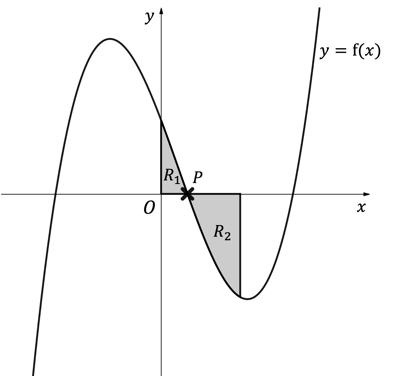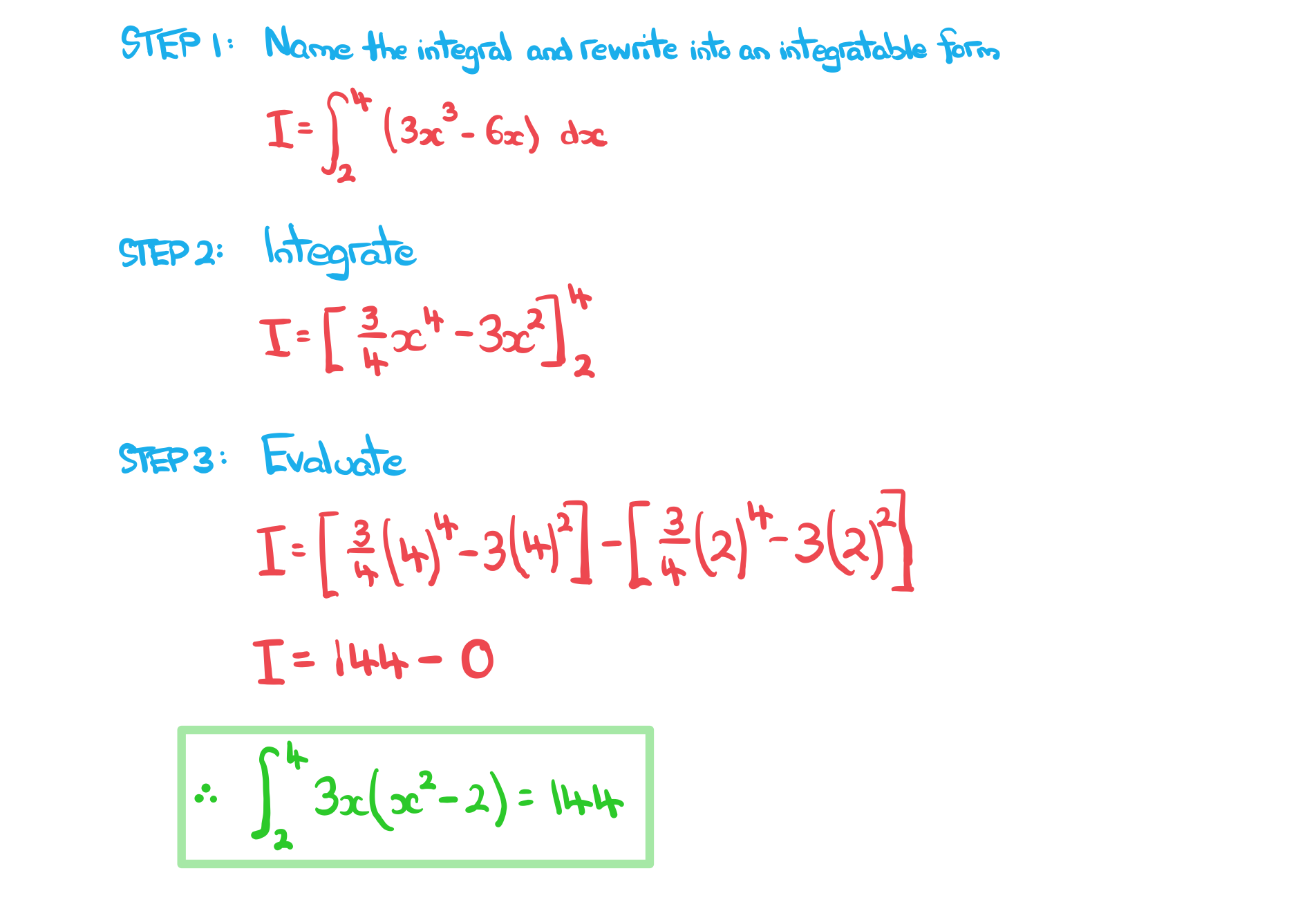Did this video help you?
Further Applications of Integration (DP IB Maths: AI HL)
Revision Note
Negative Integrals
- The area under a curve may appear fully or partially under the x-axis
- This occurs when the function
takes negative values within the boundaries of the area
- This occurs when the function
- The definite integrals used to find such areas
- will be negative if the area is fully under the
-axis
- possibly negative if the area is partially under the
-axis
- this occurs if the negative area(s) is/are greater than the positive area(s), their sum will be negative
- will be negative if the area is fully under the
How do I find the area under a curve when the curve is fully under the x-axis?

How do I find the area under a curve when all, or some, of the curve is below the x-axis?
- Use the modulus function
- The modulus is also called the absolute value (Abs)
- Essentially the modulus function makes all function values positive
- Graphically, this means any negative areas are reflected in the
-axis

- A GDC will recognise the modulus function
- look for a key or on-screen icon that says 'Abs' (absolute value)
-
- This is given in the formula booklet
Examiner Tip
- If no diagram is provided, quickly sketch one so that you can see where the curve is above and below the x - axis and split up your integrals accordingly
- You should use your GDC to do this
Worked example
The diagram below shows the graph of where
.

The region is bounded by the curve
, the
-axis and the
-axis.
The region is bounded by the curve
, the x-axis and the line
.

Did this video help you?
Area Between Curve & y-axis
What is meant by the area between a curve and the y-axis?

- The area referred to is the region bounded by
- the graph of
- the
-axis
- the horizontal line
- the horizontal line
- the graph of
- The exact area can be found by evaluating a definite integral
How do I find the area between a curve and the y-axis?
- Use the formula
-
- This is given in the formula booklet
- The function is normally given in the form
- so will need rearranging into the form
- so will need rearranging into the form
and
may not be given directly as could involve the the
-axis (
) and/or a root of
- use a GDC to plot the curve and find roots as necessary
If a diagram is not given, use a GDC to draw the graph of
(or if already in that form)
If not identifiable from the question, use the graph to find the limits and
If needed, rearrange into the form
- In trickier problems some (or all) of the area may be 'negative'
- this would be any area that is to the left of the
-axis (negative
values)
makes such areas 'positive' by reflecting them in the
-axis
- a GDC will apply
automatically as long as the modulus ( | ... | )symbols are included
- a GDC will apply
- this would be any area that is to the left of the
Examiner Tip
- If no diagram is provided, quickly sketch one so that you can see where the curve is to the left and right of the y - axis and split up your integrals accordingly
- You should use your GDC to do this
Worked example
Find the area enclosed by the curve with equation, the
-axis and the horizontal lines with equations
and
.

Did this video help you?
Area Between a Curve and a Line
- Areas whose boundaries include a curve and a (non-vertical) straight line can be found using integration
- For an area under a curve a definite integral will be needed
- For an area under a line the shape formed will be a trapezium or triangle
- basic area formulae can be used rather than a definite integral
- using a GDC, one method is not particularly trickier than the other
- The total area required could be the sum or difference of the area under the curve and the area under the line


How do I find the area between a curve and a line?
Use a GDC to calculate the area under the curve
Examiner Tip
- Add information to any diagram provided
- Add axes intercepts, as well as intercepts between lines and curves
- Mark and shade the area you’re trying to find
- If no diagram is provided, use your GDC to graph one and if you have time copy the sketch into your working
Worked example
The region is bounded by the curve with equation
and the line with equation
.
lies entirely in the first quadrant.
Find the area of the region R.

Did this video help you?
Definite Integrals
What is a definite integral?
- This is known as the Fundamental Theorem of Calculus
- a and b are called limits
- a is the lower limit
- b is the upper limit
is the integrand
is an antiderivative of
- The constant of integration (“+c”) is not needed in definite integration
- “+c” would appear alongside both F(a) and F(b)
- subtracting means the “+c”’s cancel
How do I find definite integrals analytically (manually)?
Notation: use square brackets [ ] with limits placed at the end bracket
Examiner Tip
- If a question does not state that you can use your GDC then you must show all of your working clearly, however it is always good practice to check you answer by using your GDC if you have it in the exam
Worked example



You've read 0 of your 5 free revision notes this week
Sign up now. It’s free!
Did this page help you?
